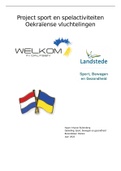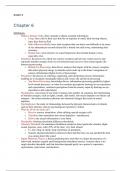Resume
Summary Paediatric Neurology and Development
- Cours
- Établissement
- Book
High-yield comprehensive revision notes on Paediatric Neurology and Development for the University of Cambridge Medicine Course. Written by a top-decile student. Covers: - Behavioural Disorders - Neurology - Neurodevelopment - Social Paediatrics - Congenital and genetic disorders
[Montrer plus]













